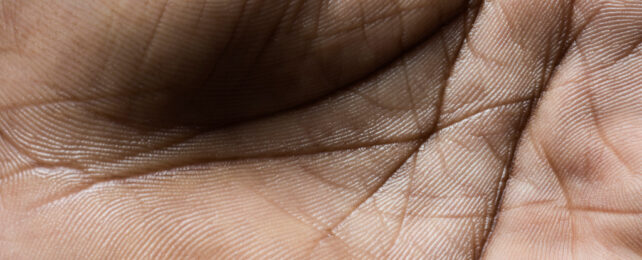Everyone has a characteristic odor; a distinctive scent. Now scientists have found that with just a whiff of someone's hand – and a fancy protein analysis machine – they can distinguish between sexes with darn-good accuracy.
In the study of 60 people, consisting of 30 men and 30 women, a person's sex could be correctly determined 96 percent of the time using odor samples swept off people's palms.
The team of researchers, led by biochemist Chantrell Frazier at Florida International University's Global Forensic and Justice Center, analyzed the odor samples using mass spectrometry, applying various statistical methods to see which one was up to the task of discerning sex from scent.
They say this approach of analyzing hand odor samples could be used to rule out someone's sex in forensic investigations where other biological samples are lacking.
But before the method can be applied in forensic settings, Frazier and colleagues caution much more research is needed to refine the processing steps and validate the statistical techniques used.
The study "paves the way for a tool" that could be used to distinguish male and female subjects, and "could assist in changing the trajectory of how we currently utilize human odor in the field of forensic," Frazier and colleagues write in their published paper.
Human hands give off a scent that contains a distinct chemical profile made up of so-called volatile chemical compounds. Being volatile, these compounds waft off the skin. Oily secretions from human hands may also be left on surfaces, along with fingerprints and traces of DNA.
Recent studies have shown that well-trained sniffer dogs are able to reliably discriminate the individual who touched an object at a model crime scene, based on scent. Past research has also looked at whether age and ethnicity could be inferred from human body odor – elephants had little trouble sniffing out the latter from recently worn garments.
In this study, the researchers didn't analyze the fragrant trace someone's sweaty palm might leave behind on say, a doorknob or clothing. Instead, they swabbed people's palms with cotton gauze, an hour or more after they last washed their hands. (The researchers didn't note if they had any trouble with perfumes masking sex-specific hand scents.)
After running the samples, the researchers compared a few statistical analyses, with one predicting the sex with 96.67 percent accuracy.
Although hand odors may be akin to a 'chemical fingerprint', the method Frazier and colleagues present is more of a screening tool than a barcode scanner.
Historically, analyses of hand odor profiles have taken a targeted approach that compares samples to a reference catalog of known compounds – which might not always be available. It could also overlook scents laced with information in the form of other components that haven't been identified yet.
Rather, the researchers envisage the tool, once validated, could be used to predict the sex of perpetrators in cases of robbery or assault when scant other biological evidence remains.
"Even in these instances where no physical fingerprint or DNA evidence is found, human scent evidence may still be recovered and used as an individualizing feature in an investigation," Frazier and colleagues write.
But as any good armchair crime scene investigator knows, forensic science is fallible, mistakes are often made and samples can be improperly handled. So spare a thought for the two people in this study whose sex was misclassified.
The study has been published in PLOS ONE.
